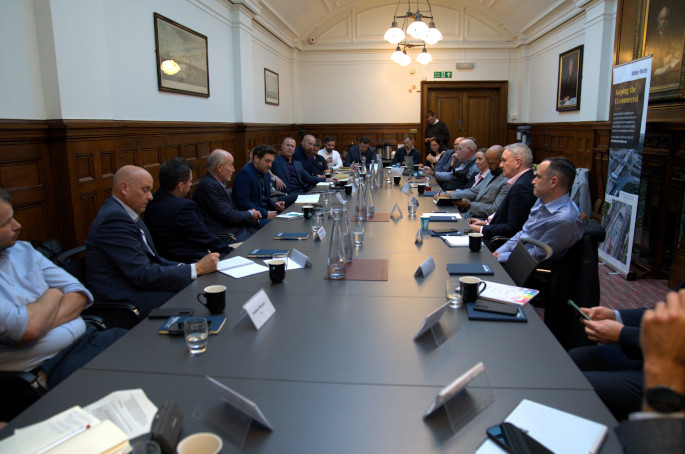As an experienced engineer formerly at a local authority, the Ranty Highwayman tries to make sense of highways and transport in the UK.
There are two issues that are often brought up by active travel campaigners and designers within my circles and which relate to the standards within the Design Manual for Roads and Bridges and how designers are interpreting them.
Functionality is in the eye of the user and there really needs to be a conversation between those who write the standards, those who design to them and those who end up having to negotiate what is built using them.
The first issue is around the provision of shared use paths appearing to default to CD143 – Designing for walking, cycling and horse-riding, rather than providing separated walking and cycling space in accordance with CD195 – Designing for Cycle Traffic.
Walking, cycling and horse-riding are distinctly different modes and the theory that we can simply lump them together as the default isn't good enough. That's not to say that sharing should never happen because where there are low pedestrian flows, it isn't usually a problem.
The standard suggests that where there are fewer than 200 users an hour, a minimum width of two metres is acceptable, but that is pretty miserly, especially where designers plump for a narrow verge buffer from traffic – just a barely mowable 0.5m for speeds of 40mph or less. Even 1.5m for high speeds feels close to the user.
The effect is that people cycling in the direction closest to the verge will shy away from traffic and be in conflict with users coming the other way. In fact, CD143 now lags behind the non-trunk road guidance in LTN1/20 Cycle Infrastructure Design, which has three metres as the minimum for up to 300 cyclists an hour where there are no more than 300 pedestrians an hour.
The problem is that providing layouts to CD195 means that space is needed for cycling, plus additional space for walking and horse-riding. Decisions made at the scoping and options development stage mean that because space costs money, the minimum approach is all too often the default.
What is being built is often narrow and without decent buffers to motor traffic. It also means that the very different geometric requirements for cycle traffic get ignored when shared use is prioritised – cycles are vehicles designed for speed, to quote Professor John Parkin of UWE Bristol.

Cheals Roundabout near Crawley; a segregated left turn lane roundabout...

...which is ostensibly to ‘standard' but subjectively unsafe to use
The second issue is roundabouts and the use of CD116 – Geometric design of roundabouts. In so many cases, the provision for walking and cycling is shared and the uncontrolled crossings of traffic arms are placed close to circulatory areas. This often involves crossing more than one traffic lane at a time, which is subjectively unsafe for the user. It's a particular feature of normal roundabouts, which are flared and designed for traffic throughput rather than the safety and comfort of people walking and cycling.
Having to cross near the circulatory area, often over multiple traffic lanes, is intimidating to many users and certainly doesn't feel safe, unless it's within a signalised arrangement. This is before we get into some of the more exotic layouts such as segregated left turn lane roundabouts.
Figure 8.10N2a in CD116 pretty much shows how scary UK roundabouts are to people walking and cycling and is a world away from Dutch best practice (the best international practice), which uses compact roundabouts where drivers are slowed and crossings for walking and cycling are a single lane at a time away from the circulatory area and all with decent verge buffers. CD116 does allow compact roundabouts, but the UK uses roundabouts as traffic flow enablers rather than junction safety features.
By comparison, LTN1/20 recognises some of these issues because when more than one traffic lane in each direction is used, the advice is to provide signalised crossings.
Of course, free flow (for traffic) layouts are becoming more and more popular so project sponsors really should be accepting the need to use grade separation, which doesn't hold anyone up and removes crossing risk and conflict.
There are campaigners and designers who would like these issues reviewed by Highways England, the devolved administrations and the county councils promoting trunk road schemes, with engagement from interested parties representing walking, cycling and horse-riding. This is because at the moment, what is being built is far from satisfactory and certainly doesn't entice people to use these layouts.
You can read Ranty Highwayman exclusively in Highways magazine every month and follow them on Twitter @RantyHighwayman































